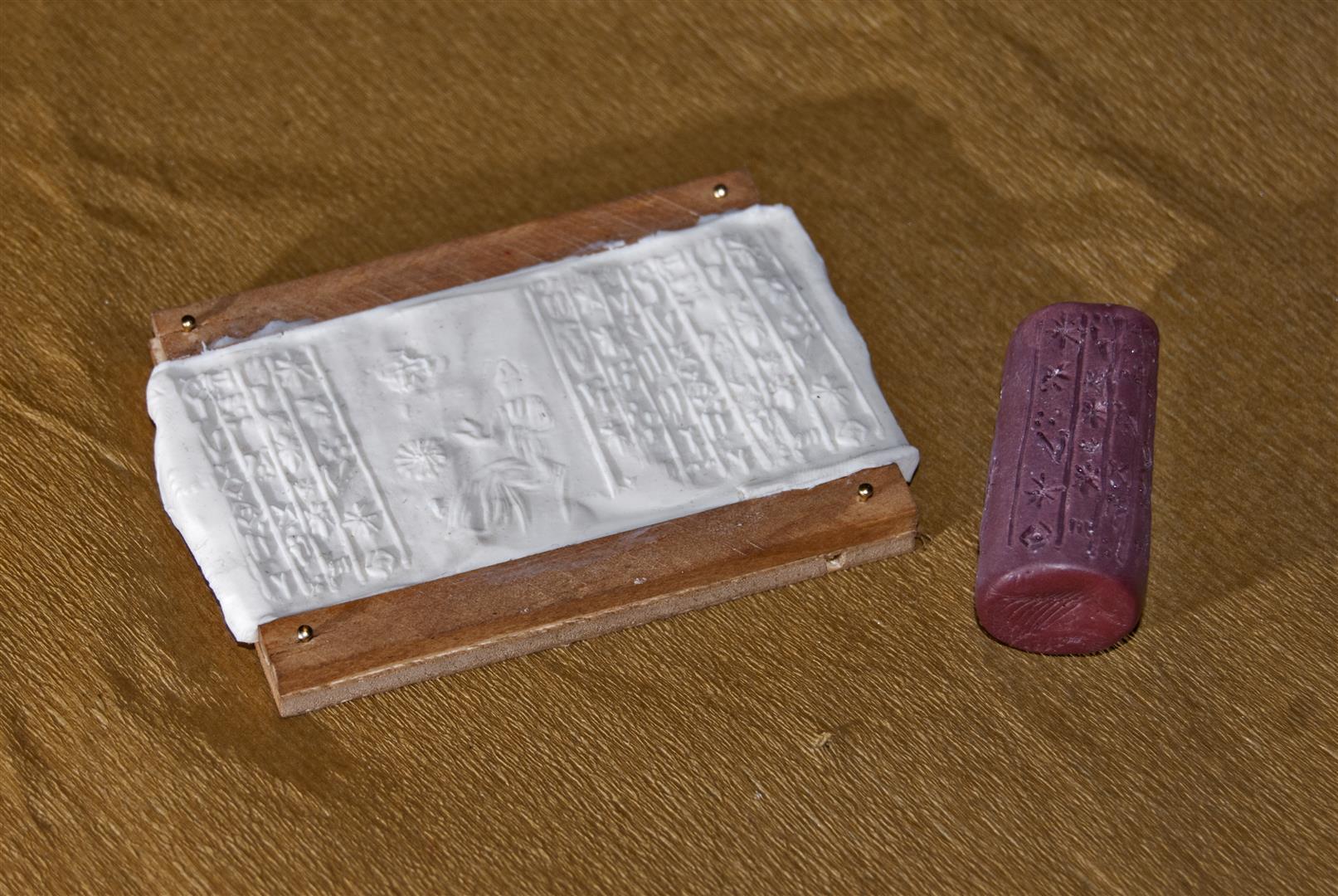
The cylinder seals appear in Mesopotamia (Uruk period, 4100-3300 BC).
They were small cylinders of stone, glass or other materials, often semi-precious stones, with a carved relief, which making them roll on a clay tablet left recording the motives, as well as record of the contents of some containers or seal documents.
 They used to have a picture accompanied by a short text, identifying its owner, so they were used as a signature to administrative title, certificate or approval of an official.
They used to have a picture accompanied by a short text, identifying its owner, so they were used as a signature to administrative title, certificate or approval of an official.
In other cases represented daily, religious and economic scenes.
The impression could be extended indefinitely, so that the result was a frieze, which gave it a decorative look.
 Among the merchants began to be used to identify clay pots, and later in other tablets as a record of your transactions.
Among the merchants began to be used to identify clay pots, and later in other tablets as a record of your transactions.
The prints were evolving from own drawings of each merchant, until a code that ended up evolving cuneiform writing.
Here we present a replica of a seal is preserved in the British Museum.
Pink Chalcedony cylinder seal.
Mesopotamia. Kassite Dynasty, between 1400 and 1300 BCE
The seated figure is the sun-god Shamash, sitting in front of a sun disk and below a cross, the two symbols.
The seven-line cuneiform inscription is a prayer to Shamash.
You can find more information on the website of the British Museum.
Our reproduction is made of resin and presented together with a clay tablet, so you can print it for the times you want.
You can purchase one from our store





